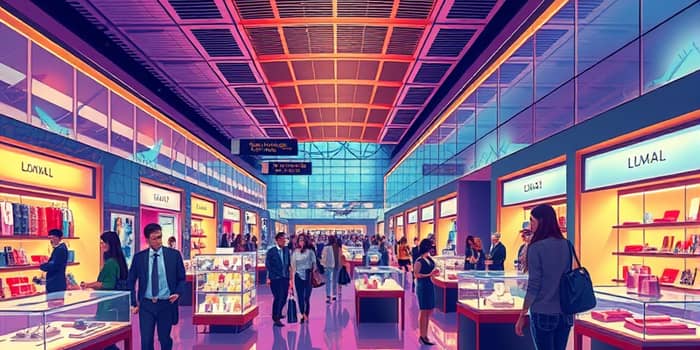
As global tourism stages a powerful comeback, luxury retailers are capturing unprecedented spending from travelers seeking exclusive experiences and high-end products across the world.
By the end of 2023, international tourist arrivals soared to 1.304 billion, signaling a robust post-pandemic recovery in global travel. This pent-up wanderlust has translated into record-breaking spend, with tourism expenditure projected to hit $2 trillion in 2025.
Within this broader rebound, the luxury travel retail segment is outpacing average economic growth, forecasted to expand by 7–10% annually during 2024–2025. Blended travel—combining business and leisure—also emerges as a high-value niche, poised to be worth $300 billion by 2025.
Asia-Pacific continues to lead the luxury retail charge, commanding over 40% of the global market. Growth in this region is driven by an expanding middle class, rising urban professionals in India, and strengthened duty-free hubs across Southeast Asia.
Meanwhile, Europe is experiencing a remarkable comeback. Between 2020 and 2024, luxury tourism revenue in Germany grew at a 35.8% CAGR, with France at 29.5%, the UK at 34.3%, Italy at 27.5%, and Spain at 29.8%. This surge reflects both renewed travel confidence and the power of historic luxury brands in key cities.
Traditional duty-free is evolving into immersive shopping experiences. Airports and cruise terminals are reinventing themselves as lifestyle hubs, featuring branded lounges, pop-up showcases, and art installations to elevate the act of shopping into an event.
Retailers are increasingly offering VIP concierge services, private preview events, and exclusive product launches. These tailored interactions satisfy high-net-worth individuals’ desire for personalization and the thrill of limited-edition or travel-exclusive items.
Digital transformation is reshaping every touchpoint of the travel retail journey. Retailers leverage mobile apps, QR codes, and AI-driven recommendations to engage the digitally savvy traveler. Customers can browse catalogs, reserve products, and arrange in-terminal pickup.
Sustainability has also moved to the forefront of luxury strategies. Brands implement ethical sourcing practices, eco-friendly packaging, and carbon-offset programs to align with growing consumer demand for responsible luxury. Transparent supply chains and recycled materials are no longer optional but expected by discerning buyers.
Despite the optimism, the sector faces headwinds. Global labor shortages pose operational challenges across airports, stores, and logistics networks. Recruiting and retaining skilled staff capable of delivering high-touch service remains a key obstacle.
Geopolitical tensions, inflationary pressures, and fluctuating consumer sentiment add further complexity. Luxury retailers must navigate these risks while continuing to innovate and deliver memorable experiences without compromising margins.
The future of luxury travel retail appears bright but demands agility. Continued investment in infrastructure—especially in APAC and European hubs—will support expanding store footprints and upgraded facilities. Brands that embrace experience-driven retail will thrive.
Looking forward, the marriage of leisure and luxury promises to deepen. Travelers increasingly seek seamless journeys where shopping, dining, and entertainment intersect. By prioritizing personalization, sustainability, and digital excellence, luxury retailers can sustain growth and meet the evolving expectations of the global traveler.
References













